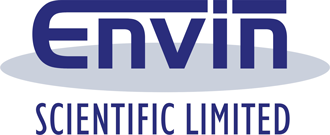
Dielectric mirrors and their applications
Dielectric mirrors offer very high reflectivity over a specific wavelength region, using thin-film deposition to create a dielectric stack with alternating high-low refractive index.
Also known as a Bragg mirror, the result is a reflector with higher reflectivity than a metallic mirror – which is why dielectric mirrors are also sometimes called ‘high reflectors’.
What is a dielectric mirror?
The surface of a dielectric mirror is actually a thin stack of very thin layers of dielectric material which alternate between high and low refractive indices.
By carefully choosing the thickness of these individual layers, the difference in path length can be made to be a multiple of the desired wavelength of light, leading to positive superposition.
In the low-to-high refractive index boundaries, a 180-degree phase shift occurs; therefore the low-index layers are designed with a half-wavelength difference in path length, again resulting in constructive interference overall.
More complicated mirrors can be produced, such as chirped mirrors, by including spaces between the dielectric layers, and this enables a wider range of wavelengths to be reflected.
What are dielectric mirrors used for?
Dielectric mirrors have a number of different applications, including the following:
- Single, multiple and broadband reflection
- Notch, shortpass and longpass filtration
- Steering light beams (e.g. from laser sources)
- High reflectivity mirrors for minimised attenuation
- Thin-film light beam splitters
The characteristics and capabilities of dielectric mirrors make them a popular choice across the full range of applications, and bespoke dielectric mirrors can be made to suit specific tasks.
Although dielectric mirrors can target a very specific wavelength or range of wavelengths, this is not mandatory, and dielectric mirrors can be produced that reflect the full visible light spectrum, or the complete spectrum of a specific laser source.
In some applications, it is not necessarily the waveband of the mirror that is of the greatest importance; instead, it may be the reflectivity, which can be as high as 99.999% or more.
Envin Scientific bespoke dielectric mirrors
We supply high reflectors and dielectric mirrors with a variety of properties. Due to their very specific nature, it is common for bespoke dielectric mirrors to be required, which we can manufacture to order and to a very high standard.
Our custom dielectric mirrors can target a single wavelength, multiple wavelengths or a broadband region of the spectrum as required.
If necessary, we can provide dielectric mirrors with specified performance outside the reflective area – either notch, shortpass or longpass as mentioned above.
We manufacture dielectric mirrors with operational wavelengths ranging from 200nm to 8,000nm, and this can be selected to suit your application, again giving you a fully bespoke dielectric mirror.
Our high reflectors function on an angle of incidence of 45 degrees as standard, but if a different angle is required we can take that into account when designing the dielectric stack. Likewise, we can take polarisation into account when specifying the reflective function of your mirror.
To find out more about our bespoke high reflectors and dielectric mirrors, or if you require custom metallic mirrors for your application, please contact us today to let us know your enquiry, and we’ll be happy to help.

